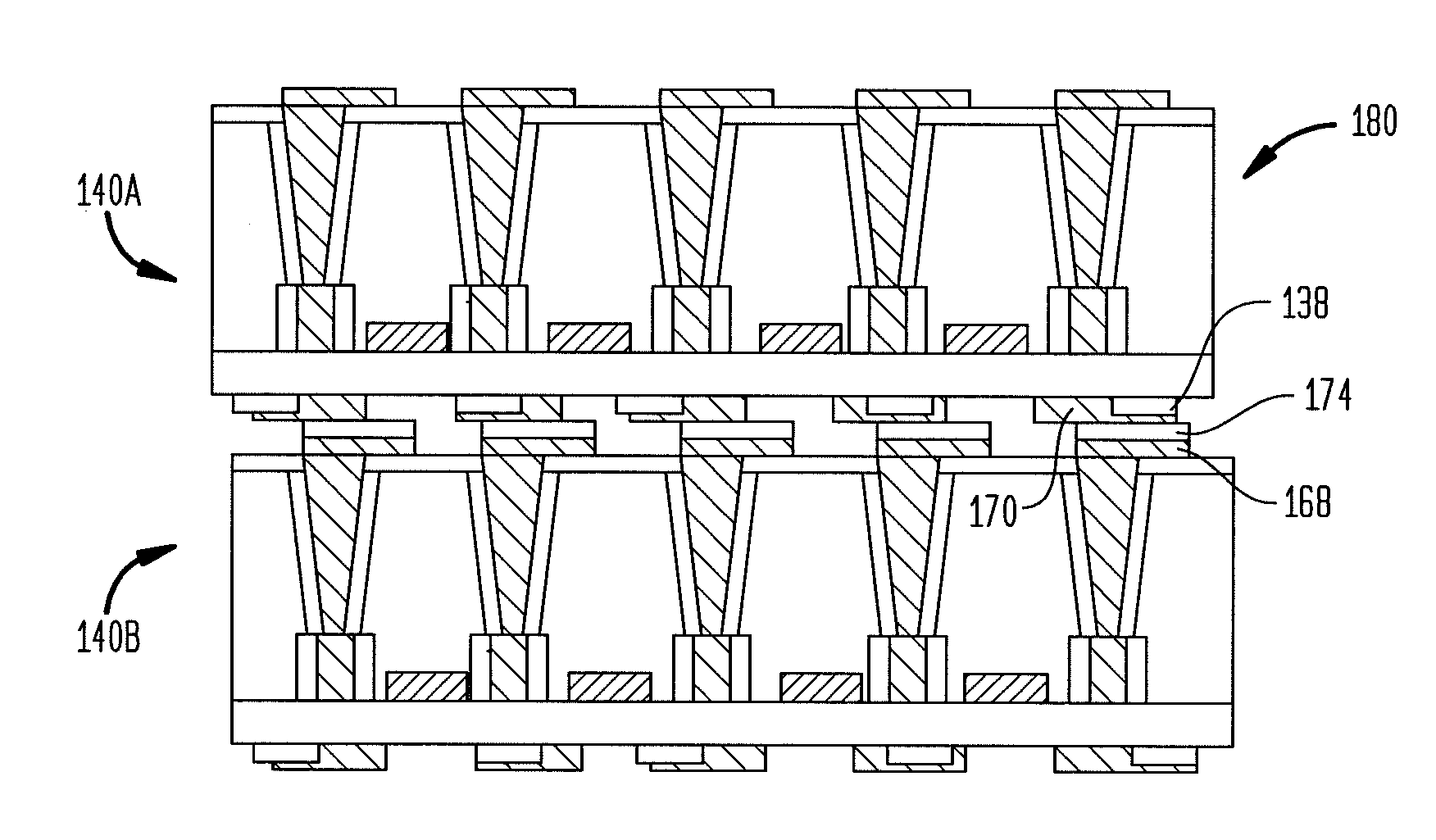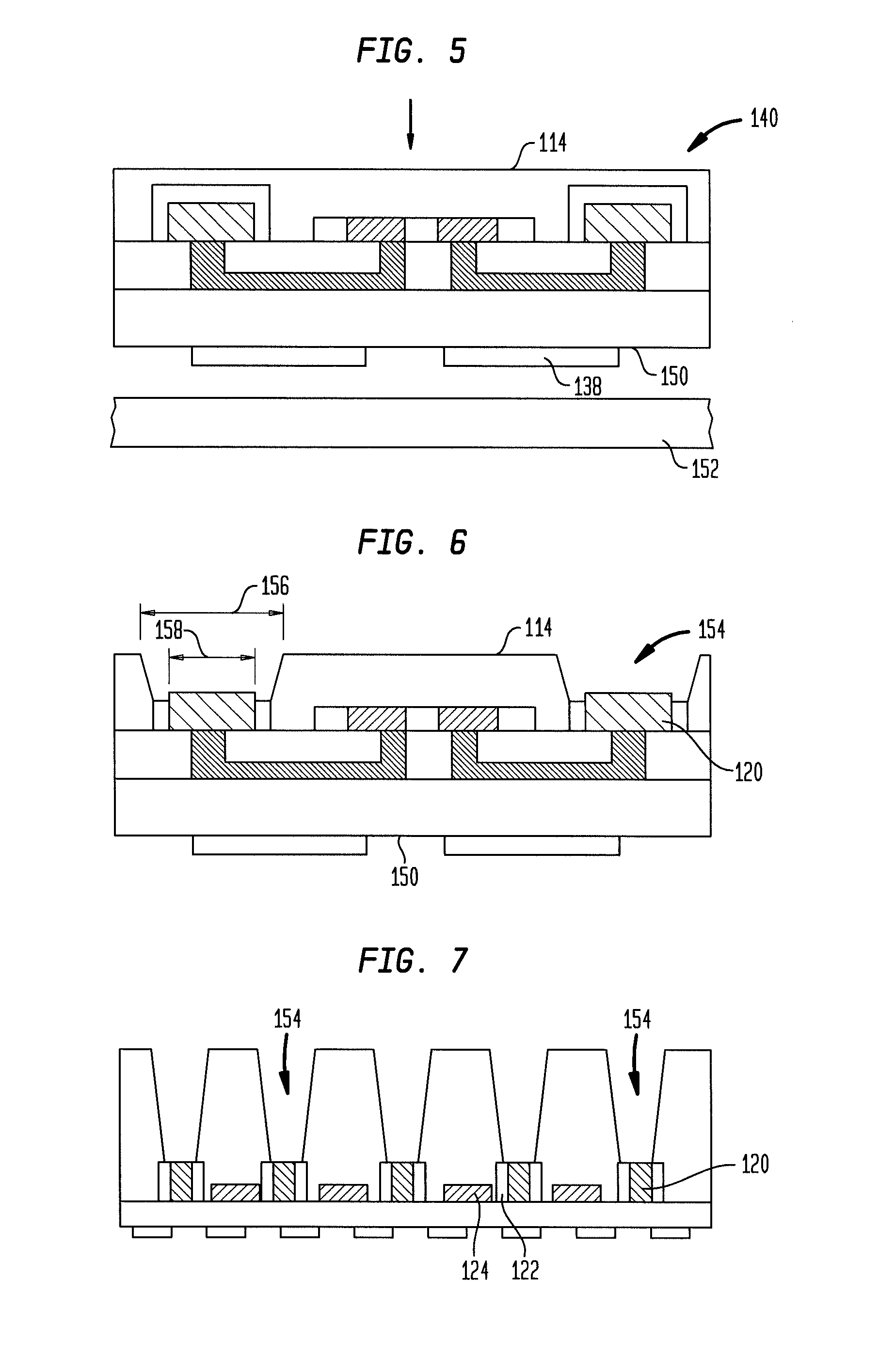Microelectronic elements with rear contacts connected with via first or via middle structures
a microelectronic element and rear contact technology, applied in the direction of semiconductor devices, semiconductor/solid-state device details, electrical apparatus, etc., can solve the problems of increasing the amount of silicon and increasing the cost of each chip
- Summary
- Abstract
- Description
- Claims
- Application Information
AI Technical Summary
Benefits of technology
Problems solved by technology
Method used
Image
Examples
Embodiment Construction
[0069]A monocrystalline semiconductor substrate, e.g., an intact wafer 100 or a portion of a wafer, is shown in FIG. 1. The wafer or wafer portion 100 is shown having a plurality of individual regions 102 which are attached to one another at peripheral edges 104 of each region 102. Through processing as further described, the regions 102 can become individual microelectronic elements, e.g., integrated circuit chips. Unless otherwise provided, processing as further described below is performed on a wafer or wafer portion which includes a plurality of regions attached to each other in this manner, either being referred to hereinafter as a “wafer”. Initially, the wafer 100 has a thickness 106 of several hundred microns. The wafer can consist essentially of silicon or a compound semiconductor material, for example, a III-V semiconductor compound such as gallium arsenide (GaAs) and the like, or a II-VI semiconductor compound.
[0070]A “via first” flow will now be described with reference t...
PUM
 Login to View More
Login to View More Abstract
Description
Claims
Application Information
 Login to View More
Login to View More - R&D
- Intellectual Property
- Life Sciences
- Materials
- Tech Scout
- Unparalleled Data Quality
- Higher Quality Content
- 60% Fewer Hallucinations
Browse by: Latest US Patents, China's latest patents, Technical Efficacy Thesaurus, Application Domain, Technology Topic, Popular Technical Reports.
© 2025 PatSnap. All rights reserved.Legal|Privacy policy|Modern Slavery Act Transparency Statement|Sitemap|About US| Contact US: help@patsnap.com



